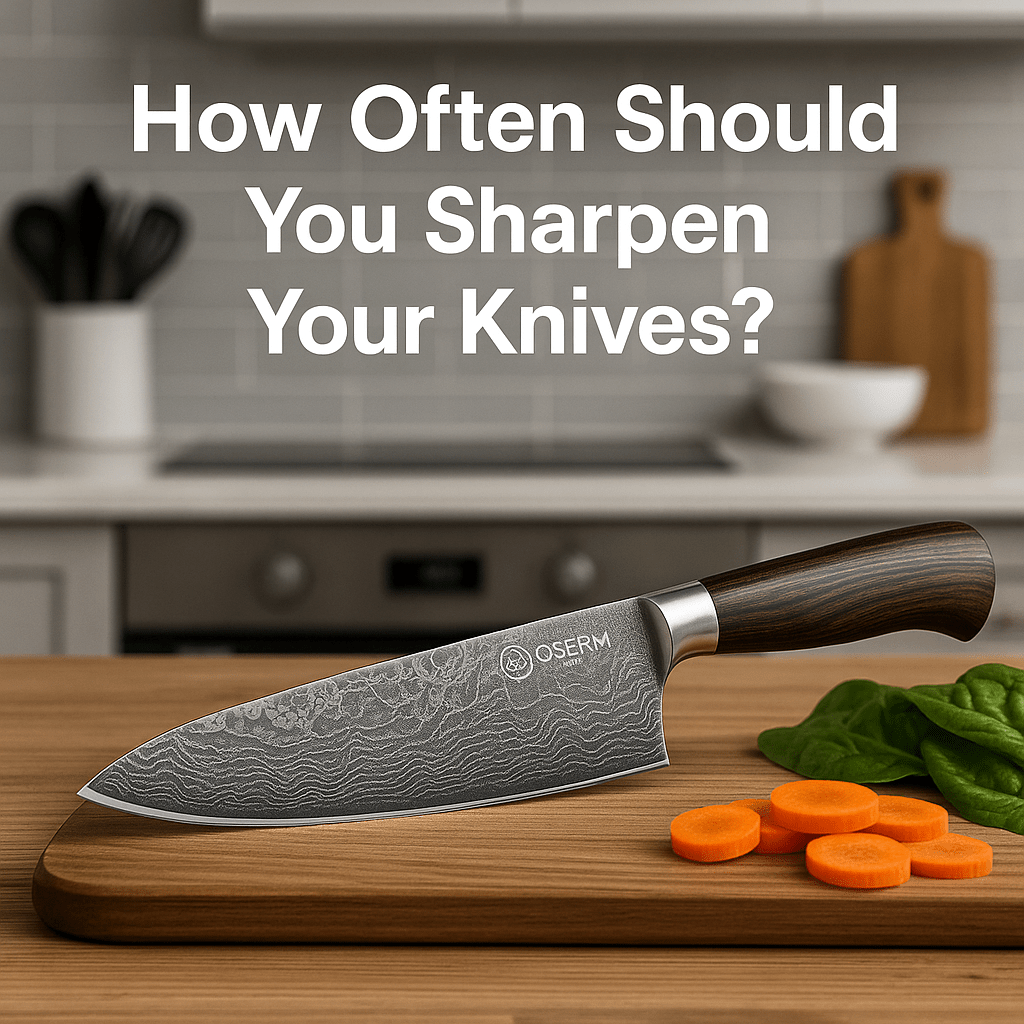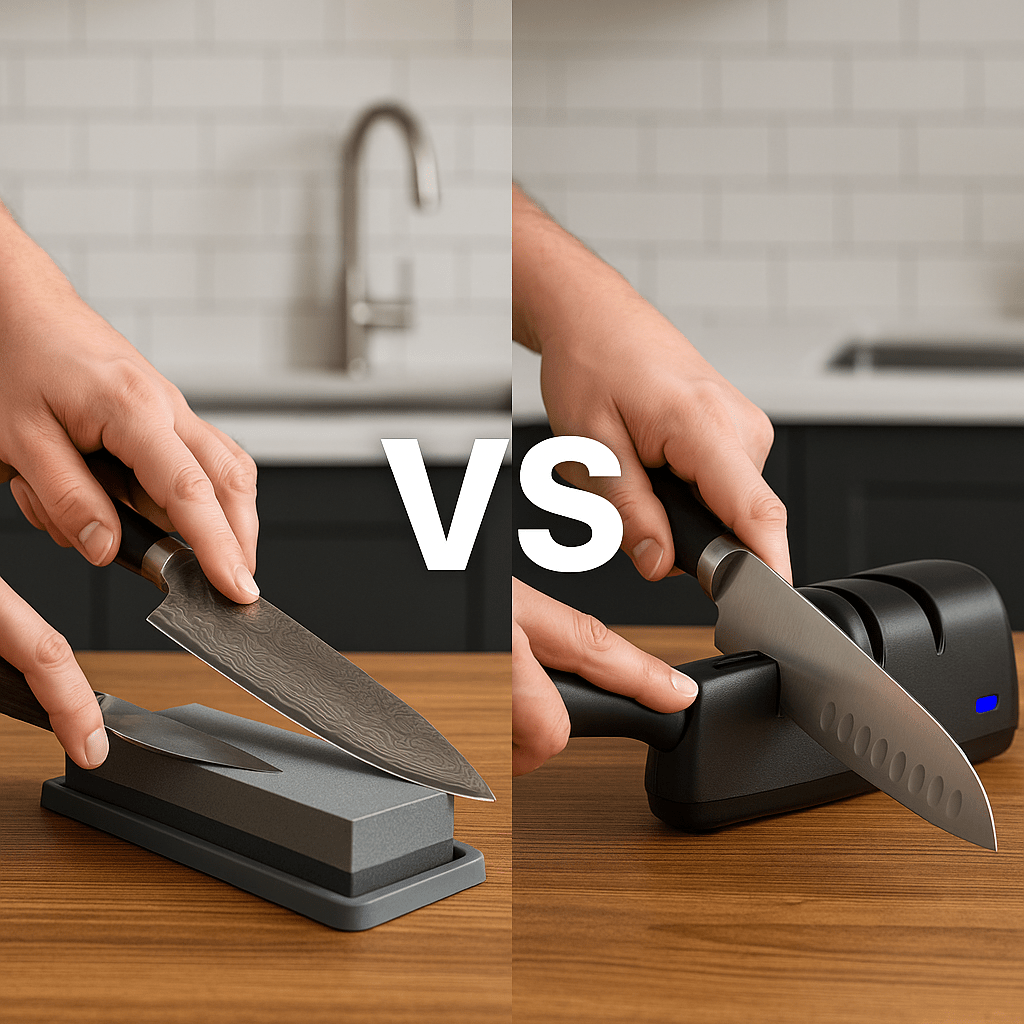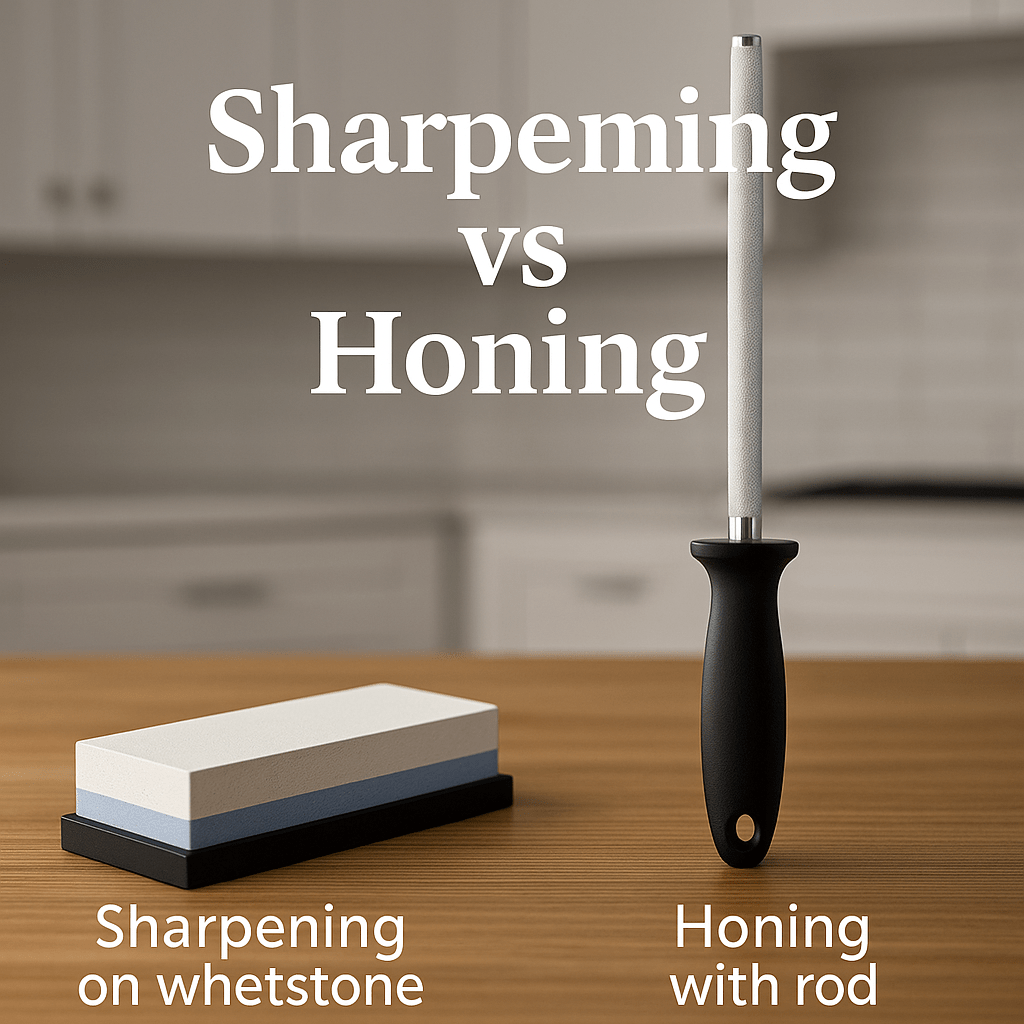
How Often Should You Sharpen Your Knives? The Ultimate Guide to Edge Maintenance
One of the most common questions every home chef asks is: “How often should I sharpen my knives?” The truth is, there’s no one-size-fits-all answer—because it depends on how often you cook, what you cut, and how you care for your blades. Still, understanding the right sharpening schedule can make the difference between an effortless glide and a frustrating struggle.
Why Knife Sharpness Matters
A sharp knife isn’t just about convenience—it’s about safety, precision, and enjoyment. Dull blades slip more easily, crush ingredients instead of slicing, and make even the simplest meal prep tiring. For OSERM Damascus knives made with VG-10 core steel, maintaining that fine edge is key to preserving the knife’s legendary performance and beautiful finish.
How Long Does a Sharp Edge Last?
The lifespan of sharpness depends on several factors:
- Steel Quality: Premium steels like VG-10 or AUS-10 hold edges longer than standard stainless steel.
- Usage Frequency: Daily cooks will need more frequent maintenance than occasional users.
- Cutting Surface: Wooden or bamboo boards protect edges better than glass or ceramic surfaces.
- Maintenance Habits: Regular honing can double or triple the time between sharpening sessions.
As a general rule, professional chefs hone daily and sharpen every 2–4 weeks, while home cooks can hone weekly and sharpen every 2–3 months.
Honing vs Sharpening: Maintenance in Two Steps
Many confuse honing with sharpening, but they serve very different purposes:
- Honing: Realigns the edge without removing metal. Use a ceramic or steel honing rod every few uses.
- Sharpening: Removes small amounts of metal to rebuild the edge. Done less often, typically using a whetstone or sharpener.
In short: Hone often, sharpen occasionally. Think of honing as brushing your teeth and sharpening as a dental cleaning—it keeps your knives healthy between “checkups.”
How to Tell When It’s Time to Sharpen
Here are simple tests to know when your knife needs a full sharpening session:
- Tomato Test: If the blade slides off the tomato skin instead of slicing through cleanly, it’s time to sharpen.
- Paper Test: A sharp knife glides through paper without snagging; if it tears or skips, the edge is dull.
- Sound Test: A dull blade makes a dragging sound on vegetables instead of a clean “slice.”
If honing no longer restores sharpness, or your blade starts to crush food fibers rather than cut them, it’s time for a proper sharpening session.
Best Sharpening Frequency by Knife Type
| Knife Type | Recommended Honing | Recommended Sharpening |
|---|---|---|
| OSERM Damascus (VG-10) | Every 3–5 uses | Every 2–3 months |
| Western Chef Knife (German Steel) | Weekly | Every 6–8 weeks |
| Utility / Paring Knife | Every 2 weeks | Every 3 months |
| Butcher or Cleaver | Occasionally | Every 4–6 months |
OSERM’s Professional Sharpening Routine
At OSERM, we recommend this easy-to-follow routine for home chefs who want professional results:
- Hone Weekly: Use a ceramic honing rod at a 15° angle. Light pressure is enough to realign the edge.
- Sharpen Monthly: Use a 1000/6000-grit whetstone. The 1000 grit rebuilds the edge; the 6000 grit polishes it to a mirror finish.
- Strop Occasionally: For the ultimate finish, use a leather strop or 8000+ grit stone every few months.
What Happens If You Over-Sharpen?
Over-sharpening removes too much metal and shortens your knife’s life. Damascus and VG-10 knives are forged with layered steel for strength and beauty—grinding them too often or too aggressively erodes both. Instead, focus on light honing maintenance and reserve sharpening for when the knife truly needs it.
Expert Tips to Extend Edge Life
- Use wood or bamboo boards instead of glass or marble.
- Never twist the knife while cutting—it damages the edge alignment.
- Clean and dry your knives immediately after use.
- Store knives on a magnetic strip or in a knife block to protect the edge.
OSERM Damascus Knives: Built to Stay Sharp
Each OSERM Damascus knife is forged from a VG-10 Japanese core, layered with 67 sheets of high-carbon Damascus steel. This unique structure delivers superior hardness (60±2 HRC) and long-lasting sharpness. With proper honing and occasional sharpening, an OSERM knife can hold its edge up to 10x longer than standard kitchen knives.
Conclusion
Sharpening your knives is not just maintenance—it’s respect for your tools. Whether you’re slicing delicate sashimi or chopping through firm vegetables, a properly maintained knife rewards you with precision and pleasure in every motion. Remember: Hone often, sharpen rarely—but always with care.
With OSERM Damascus knives, the goal isn’t to sharpen more often—it’s to sharpen smarter.
Weekly Deal 🔥
Take care of your knives the professional way with the OSERM Knife Maintenance Kit—featuring a premium 1000/6000-grit whetstone and ceramic honing rod, perfectly matched for VG-10 Damascus steel.
Shop OSERM Knife Care Essentials →
You Might Also Like
- Honing Rod vs Sharpening Stone – What’s the Difference?
- Manual vs Electric Knife Sharpeners – Which Works Better?
- Knife Care 101 – How to Make Your Knives Last Longer
Tags: knife sharpening frequency, OSERM Damascus knives, VG-10, whetstone, honing rod, knife maintenance, edge retention






